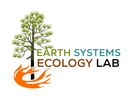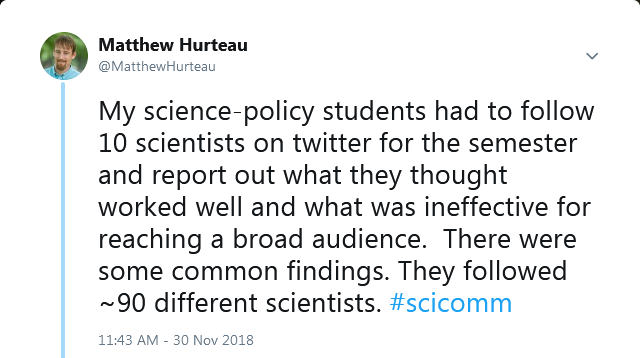|
There seems to be a misunderstanding in what is often referred to loosely as wildfire risk. Risk for anything is calculated by combining the probability or chance that an event occurs and the consequence of that event occurring. We do things to manage risk that can change either the chance that the event occurs, the consequence of the event occurring, or both. The COVID-19 vaccine is a perfect example of changing both, by decreasing the chance that you get COVID-19 and the consequence if you do (decreased severe illness).
In wildfire terms, I keep seeing news stories and quotes from elected leaders that forest management is going to reduce wildfire risk or, in the most poor representation of the concept, treatments will stop wildfires. In terms of the risk equation, the chance that a wildfire occurs is the result of having an ignition source when the vegetation and weather will support that ignition turning into a fire. The consequence of the fire depends on how and where the fire burns. We have no shortage of ignitions on our flammable landscapes in the US. This year, in the western US, we have severe drought conditions that mean there is a greater chance that an ignition will cause vegetation to combust because dry vegetation is more flammable than wet vegetation. What we really care about though is the consequence of a wildfire occurring and this is where forest and vegetation management come into play. As I have written about before (here and here), when you have more vegetation and it becomes drier, fires can become more impactful because they are releasing substantial amounts of energy that can lead to things like a fire creating its own weather. Managing vegetation reduces the chance that a fire creates its own weather because there is less energy stored in vegetation. Managing vegetation also helps create conditions that allow wildland firefighters to more easily protect homes and it changes the effects of the fire on the vegetation that is present on the landscape. The basic fact is that we cannot exclude fire from our landscapes. We have plenty of ignitions and climate change is making the vegetation more flammable. We also have a surplus of vegetation in a number of areas because we have been excluding fire for decades. We are trying to change the risk with forest management by changing the way the fire burns on the landscape. We also need to work on making homes less flammable and managing vegetation in the wildland urban interface to help reduce risk, but that is a topic for another day. When you hear or read about reducing wildfire risk, this is really about changing the way that fire behaves on the landscape. When you hear someone talk about forest management stopping fire, know that is incorrect and we cannot stop fire. Managing vegetation to change fire behavior is one of the solutions that we have at the local level for managing the risk of high-consequence wildfires.
0 Comments
This blog post is in response to all of the interest in the Twitter post I made about my student’s opinions regarding science communication on Twitter. About my course My course is called science-policy and it is focused on how to effectively engage as a scientist in the decision-making process. We spend the first third of the class discussing different philosophies behind engagement and the roles that scientists can play in the process. The middle third is a mix of case studies (e.g. Northwest Forest Plan, experimental flooding in the Grand Canyon, etc) and guest visits from congressional staffers. The final third is focused on effective communication. This involves writing research briefs, giving short presentations, and the elevator speech. I like to experiment with a different assignment each year and see how it works. I make them worth a very small fraction of the course grade in case they are a flop. I ask the students at the end what they thought of the assignment and it either evolves or is eliminated. This year I had them follow ten scientists on Twitter for the semester and report three things they thought worked well for communicating science and three things they thought did not work well. I tweeted the common ones out because I thought they were interesting and the one-off ones that made me chuckle while grading. These are absolutely the opinions of my students. They did not get any more guidance than I stated above. Stats on the scientists they followed Total = 82 (20 female, 62 male, 17 early career) The fields of expertise were diverse and ranged from psychology to neuroscience to space to climate to ecology and many more. 58 are at academic institutions and the balance is a mix of government, NGO, and independent Location: US 65; UK 9, Canada 4, 1 each in Spain, Portugal, Germany, Australia Stats on number of followers: Max 13M; Q3 77,400; Median 9,557; Q1 945; Min 195 Three of the early career (< Assistant Professor) had more followers than the median Probably the thing that caused the most consternation within the twitterverse was that scientists are people too and many tweet personal stuff as well. Drum roll please… Exactly 4 of the 58 had anything “personal” in their description and only 2 stated that this was their personal account. Unpacking “politics not science” Given the character limitation, I boiled down something nuanced to three words. Unfortunately, this yielded statements about my students being biased, privileged, and entitled. I found the privileged and entitled comment so preposterous that I shared it with my colleagues and we all got a laugh. No one has ever described students at our university as privileged and entitled. What that three word summary represented was the fact that students who mentioned politics very much appreciated when scientists brought their expertise to the discussion about a politically hot-button topic such as climate change. They thought folks like Katharine Hayhoe did a fantastic job of communicating the science, addressing the policy context, and answering questions. What they found ineffective was when scientists mixed their political views on stuff unrelated to their research in with their tweets about science. Note: Katharine Hayhoe was listed as an example of a top-notch science communicator by several students. This also happens to be my opinion. My Opinion The tweet summary represents the opinions of my students. I tweeted the common ones out because I found them interesting. The wonderful thing about the First Amendment is that if you are a US-based scientist you’re entitled to tweet out whatever you want. Non-science audiences are as diverse as the people who do science professionally. If you take anything away from this very limited survey of my students it should be this: If you want to effectively communicate your science, figure out what audience you are trying to reach and tailor your approach to that audience. You may turn some others off, but if you’re reaching your intended audience, who cares. I work on forests, fire, and climate change. My intended audience is policy-makers and natural resource managers. Some other folks, that don’t fall into those groups, appreciate the information I share. I dabble on Twitter, but that is not my primary tool for communicating science with my intended audience. I’m always happy to answer anyone’s questions, as long as they are respectful. Take what you want from this and leave the rest. If you use a similar exercise and find something that improves on what I did, please share it. If you’re put off by my student’s opinions, I recommend you do some self-reflection to figure out why you are all twisted-up over the opinions of a group of young people you’ve never met who haven’t singled you out in some way. My personal opinion is that my expertise on feedbacks between forests, fire, and climate doesn’t make me an expert on any other topic. Thus, my opinion on another topic isn’t any more valid than anyone else’s. Any comments require my approval and I am pretty bad about paying attention to the notifications. The explosive nature of the vegetation currently burning in the California wildfires is a direct result of high temperature and a prolonged period with no rain. Vegetation, or fuel as it is often referred to in fire science, contains water. Water has a high specific heat, which is the amount of energy required to raise an amount water by one degree Celsius. In the case of water it is 4.186 joules of energy per gram of water. To get vegetation to burn you need enough heat to boil off the water in the vegetation first. It takes 540 kcal to boil a kilogram of water. This is precisely why if you try and start a campfire with wet wood, you are going to be cold.
In the shrub or chaparral ecosystems that are currently burning in southern California, fuel moisture after the winter rainy season is over 100%. That means that for every kilogram of shrub there is a kilogram or more of water. This year, Chamise, a common shrub in southern California, peaked at 120% fuel moisture and is currently at 60% fuel moisture. This means half as much energy is required to get the shrubs to burn now as was required back in early June. When you are trying to light a campfire, the best thing to do is to get your head down near the base and blow. This increases the amount of air and oxygen moving past the flame. A little flicker, some well place blowing, and viola, you’ve got a nice campfire. Now add Santa Ana winds to already dry fuel and an ignition source and the result is explosive fire conditions. As vegetation burns and generates heat, it pre-heats the vegetation in front of it, causing the water to boil off before the flame reaches the vegetation. This preconditions the vegetation to burn, similar to seasoning your fire wood. How climate change makes it worse Climate change is causing higher temperatures, both during the day and at night. When the atmosphere is warmer, it can hold more water. This causes ecosystems to dry out as water in the ecosystem evaporates and plants release more water as they photosynthesize. As a result, higher temperatures alone are enough to dry out vegetation. Next we add the longer dry season in California. The length of time between when the winter rains in one year stop and the rains the next year start has been increasing with ongoing climate change. These two factors, higher temperatures and a longer dry season, increase the length of time each year that these ecosystems are available to burn. The longer it has been since the last rain event, the drier the vegetation. This prolong dry period and drier vegetation during the Santa Ana wind period causes explosive fire growth during high wind events. |
Details
Archives
October 2023
Categories
All
|





 RSS Feed
RSS Feed